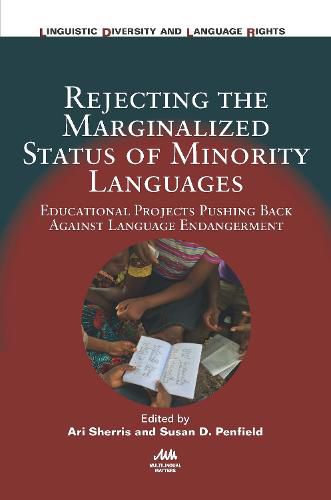Readings Newsletter
Become a Readings Member to make your shopping experience even easier.
Sign in or sign up for free!
You’re not far away from qualifying for FREE standard shipping within Australia
You’ve qualified for FREE standard shipping within Australia
The cart is loading…






This book explores Indigenous, tribal and minority (ITM) language education in oral and/or written communication and in the use of new technologies and online resources for pedagogical purposes in diverse geopolitical contexts. It demonstrates that ITM language education transpires in both formal and informal spaces for children or adults and that sometimes these spaces are online, where they become de-territorialized discourses of teaching and learning.‘ The volume brings together examples of ITM language education that are challenging the forces that flatten 'languacultures’ into artefacts of history. It also examines the economic and material realities of the people who live in and through their ‘languacultures’, or who aspire to do as much. The book will be useful for educators and all those interested in Indigenous and minority language issues, as well as for a wide range of undergraduate, graduate and research contexts where topics of language education and minority rights are the focus.
$9.00 standard shipping within Australia
FREE standard shipping within Australia for orders over $100.00
Express & International shipping calculated at checkout
This book explores Indigenous, tribal and minority (ITM) language education in oral and/or written communication and in the use of new technologies and online resources for pedagogical purposes in diverse geopolitical contexts. It demonstrates that ITM language education transpires in both formal and informal spaces for children or adults and that sometimes these spaces are online, where they become de-territorialized discourses of teaching and learning.‘ The volume brings together examples of ITM language education that are challenging the forces that flatten 'languacultures’ into artefacts of history. It also examines the economic and material realities of the people who live in and through their ‘languacultures’, or who aspire to do as much. The book will be useful for educators and all those interested in Indigenous and minority language issues, as well as for a wide range of undergraduate, graduate and research contexts where topics of language education and minority rights are the focus.